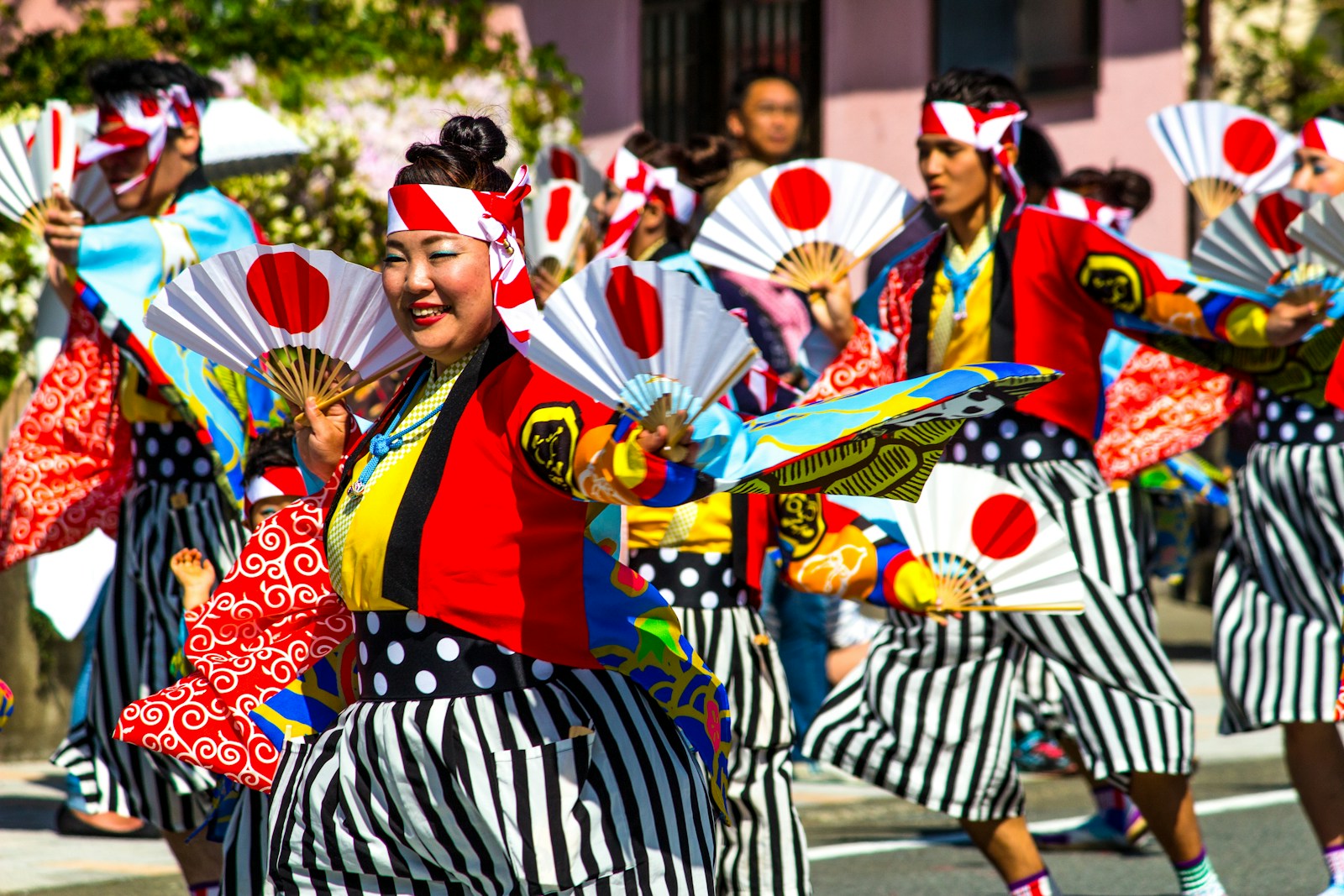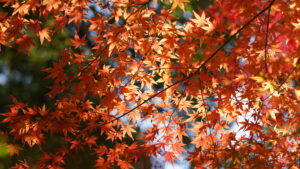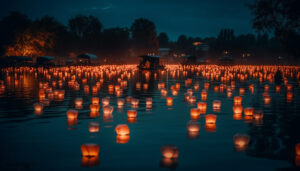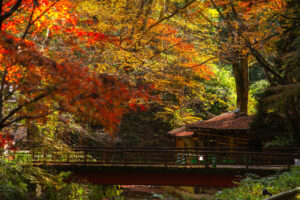Japan, a country where ancient traditions seamlessly blend with futuristic innovations, offers a kaleidoscopic view of cultural festivities that capture the imagination of travelers worldwide. Each festival, or "matsuri," as it is known in Japanese, provides a vibrant window into the soul of Japan, showcasing a rich tapestry of history, mythology, and community spirit. From the snow-draped sculptures of Sapporo to the colorful floats of Kyoto, this journey across Japan’s festivals is an unparalleled cultural immersion, inviting onlookers to dive deep into the heart of Japanese tradition and celebration.
Unveiling Japan’s Festive Spirit: A Prologue
Japan’s festivals are a testament to the country’s deep-rooted history, diverse culture, and the unyielding spirit of its people. These events, ranging from solemn religious ceremonies to exuberant street parades, offer a glimpse into the essence of Japanese society. They are not only occasions for joy and celebration but also vital means of preserving ancient customs and folklore. As seasons change, so does the thematic nature of these festivals, each bringing to life the unique attributes of its time of year. For visitors and locals alike, participating in these festivals is akin to stepping into a living, breathing museum of Japanese culture.
Journey Through Time: The Origins of Japanese Festivals
The origins of Japanese festivals are as diverse as the festivals themselves, rooted in ancient agricultural rituals, Shinto deities, Buddhist traditions, and historical events. These celebrations have evolved over centuries, incorporating elements from various epochs of Japanese history. Initially, many festivals began as religious ceremonies to pray for a good harvest, ward off evil spirits, or honor the deities of Shintoism and Buddhism. Over time, they transformed, absorbing influences from samurai culture, Edo-period entertainment, and more, becoming the multifaceted celebrations we see today.
Sapporo Snow Festival: Winter’s Majestic Artistry
Every February, the city of Sapporo transforms into a winter wonderland for the Sapporo Snow Festival, one of Japan’s largest and most anticipated winter events. The festival began in 1950 and has since grown into an international spectacle, drawing artists and tourists from around the world. Magnificent ice and snow sculptures, some towering several meters high, line the streets and parks, depicting everything from historical figures to iconic landmarks and popular characters. The festival is not only a showcase of artistic talent but also a celebration of winter’s beauty, resilience, and the communal spirit of Sapporo’s citizens.
Kyoto’s Gion Matsuri: A Parade of Centuries
The Gion Matsuri, held in July in the ancient city of Kyoto, is a spectacle of history and tradition that dates back over a thousand years. It is famous for its grand procession of floats, known as "Yamaboko Junko," which are elaborate wooden structures adorned with tapestries and accompanied by musicians and performers in period costumes. This festival originated as a religious ceremony to appease the gods during an epidemic and has since become a symbol of Kyoto’s cultural heritage. The Gion Matsuri offers a rare glimpse into the Heian period, celebrating the elegance, artistry, and aristocratic traditions of old Kyoto.
Aomori’s Nebuta Matsuri: Where Myths Awaken
In the heart of summer, the Aomori Nebuta Matsuri brings to life the legends and heroes of Japanese folklore through its vibrant and dramatic floats. These illuminated creations, crafted from washi paper and lit from within, parade through the streets alongside dancers and musicians, creating a mesmerizing spectacle. The festival is said to have origins in the Tanabata festival traditions, combined with local storytelling and artistry. It is a powerful expression of communal art, where the boundary between spectator and performer blurs, and everyone is invited to partake in the collective effervescence.
Osaka’s Tenjin Matsuri: A Waterborne Spectacle
Osaka’s Tenjin Matsuri, with its origins in the 10th century, honors Sugawara Michizane, a deity of learning and scholarship. This festival is renowned for its dynamic blend of land and river parades, featuring a procession of thousands of participants dressed in the regalia of court nobles of the Heian period. The highlight is the "Funatogyo," a majestic river procession where illuminated boats glide gracefully on the Okawa River, accompanied by fireworks that light up the night sky. The Tenjin Matsuri encapsulates Osaka’s spirit, celebrating its historical significance and the water that has been vital to its prosperity.
Tokyo’s Sumida River Fireworks: Sky-High Celebrations
The Sumida River Fireworks Festival is one of Tokyo’s oldest and most beloved summer events, tracing its origins back to the 18th century. It was initially conceived to ward off famine-causing spirits, evolving into a dazzling display of pyrotechnics that attracts millions of spectators. The night sky above the Sumida River becomes a canvas for a spectacular show of light and color, with hundreds of fireworks illuminating the Tokyo skyline. Beyond the visual spectacle, the festival is a time for family and friends to gather, share meals, and create memories, embodying the communal joy of Japanese summer festivals.
Takayama’s Autumn Festival: When History Comes Alive
Takayama’s Autumn Festival, held in the picturesque town of Takayama in Gifu Prefecture, is celebrated for its stunning floats and mechanical dolls, or "karakuri ningyo." This festival, dating back to the 16th century, honors the deities of the Sakurayama Hachimangu Shrine and showcases the craftsmanship and artistry of the Hida region. The elaborately decorated floats, combined with traditional music and performances, transport spectators back in time, offering a vivid experience of Japan’s rich cultural and artistic heritage.
Kanamara Matsuri: Embracing the Unconventional
The Kanamara Matsuri, held at the Kanayama Shrine in Kawasaki, is perhaps Japan’s most unconventional festival, centered around fertility and protection from sexually transmitted diseases. Known for its phallic symbols, including giant sculptures and parade floats, the festival has a lighthearted and inclusive atmosphere, attracting a diverse crowd. Despite its modern popularity, the festival has ancient roots and serves as a reminder of Japan’s capacity to blend the sacred and the profane, the traditional and the modern, in its unique cultural expressions.
Nada no Kenka Matsuri: A Clash of Festive Titans
Held in Himeji, the Nada no Kenka Matsuri is a dynamic and physical display of festival spirit. Known as the "fighting festival," teams of men carry heavy, elaborately decorated portable shrines, colliding them in a show of strength and endurance. This unique festival is a celebration of masculinity, camaraderie, and community spirit, drawing participants and spectators from across Japan. It offers a stark contrast to the peaceful, solemn nature of many other Japanese festivals, showcasing the diversity and complexity of Japan’s cultural traditions.
Food, Fun, and Folklore: Navigating Japan’s Festival Foods
No festival experience in Japan is complete without indulging in the plethora of foods available at street stalls, known as "yatai." From savory treats like takoyaki (octopus balls) and yakisoba (fried noodles) to sweet delights such as kakigori (shaved ice) and taiyaki (fish-shaped cakes filled with sweet red bean paste), festival foods are an integral part of the celebration. These culinary delights offer a taste of Japan’s regional flavors and traditional cooking methods, making each festival a gastronomic adventure as much as a cultural one.
Beyond the Festivals: Japan’s Year-Round Cultural Journey
While Japan’s festivals are highlights of the cultural calendar, the country’s cultural journey extends far beyond these events. From the serene beauty of cherry blossom viewing in spring to the introspective calm of autumn leaf viewing, Japan offers a myriad of experiences that invite deep cultural immersion. Museums, historical sites, and natural landscapes provide a backdrop to explore Japan’s art, history, and traditions throughout the year. Engaging with local communities, participating in traditional arts, and exploring off-the-beaten-path destinations can enrich the understanding and appreciation of Japan’s multifaceted culture.
Japan’s festivals are a vibrant expression of its cultural soul, offering a dazzling array of experiences that highlight the country’s rich history, artistic achievements, and community values. From the snow-sculpted lanes of Sapporo to the neon-lit skies of Tokyo, each festival is a chapter in the ongoing story of Japan, inviting visitors to partake in traditions that have been cherished and preserved across generations. A journey through Japan’s festivals is not just a celebration of seasons and stories; it is an immersion into the heart of Japanese life, an experience that resonates long after the last firework fades into the night sky.






